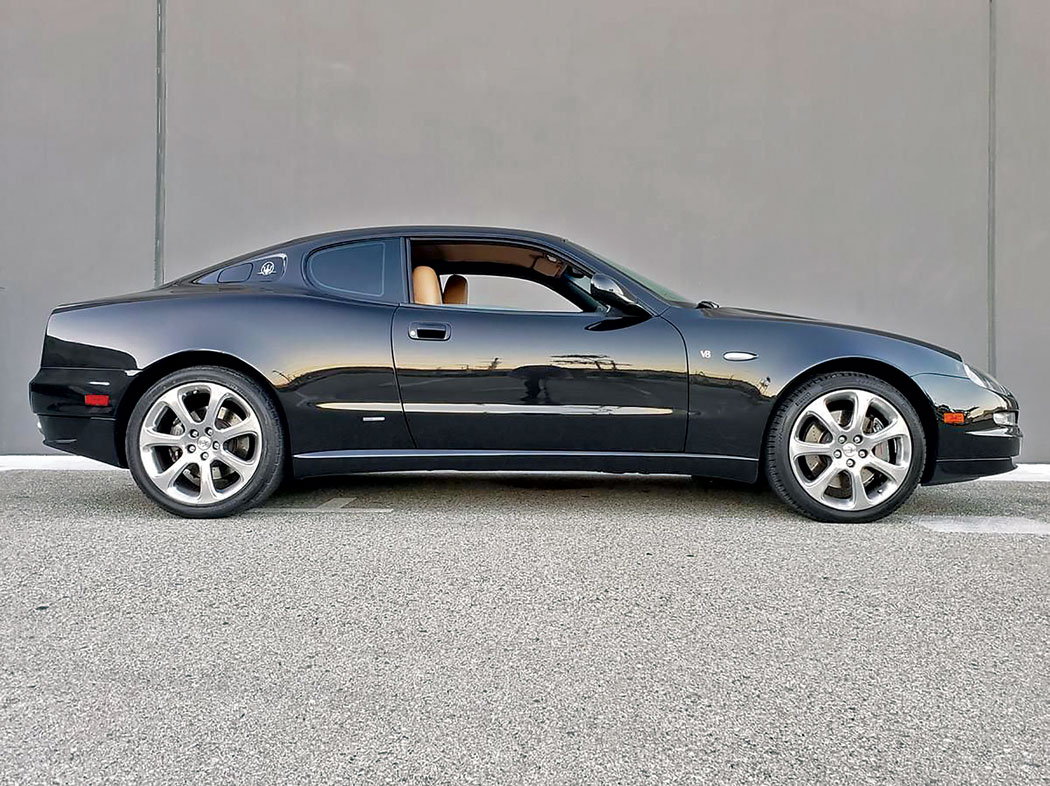
When Maserati returned to America in 2002, the company ended an 11-year absence from our market. A lot happened in those years, most notably an ownership transfer from Fiat to Ferrari. That change has been crucial to Maserati ever since. For one thing, it gave Maserati a ready-made dealership and service network. The Trident brand also benefited from Ferrari’s investment in drivetrains, technology and manufacturing.
Impeccable lineage
The breathtakingly angular Shamal and second-generation Ghibli of the 1990s gave way to the smooth lines of the 3200 GT at the turn of the millennium. This was the immediate predecessor to the Coupé that finally came to America. The 3200 GT was begun under Fiat ownership, but Maserati was Ferrari-controlled by the time it went on sale.
Ferrari ownership did not lead to any kind of badge-engineering. Rather, the 2002–07 Maserati Coupé joined Maserati’s great tradition of 2-door grand-touring coupes. The first in its lineage to be entirely designed and produced under Ferrari management, it shows.
Like the 3200 before it, Maserati turned to Giorgetto Giugiaro’s Italdesign for the Coupé’s bodywork. Giugiaro had previously designed the first-generation Ghibli in the 1960s as well as the mid-engine Maserati Bora and Merak in the 1970s. For the fin de siecle, Italdesign gave the 3200 GT and then the Coupé a smooth, aerodynamic shape well-suited to the era.
The 4-seat interior was designed by Enrico Fumia at Centro Stile Lancia. The passenger’s compartment features flowing lines, contrasting colors and an instrument binnacle in front of the driver. The interior treatment of many cars built around the same time may be regarded as sincere flattery to Fumia’s work.
Powered by Ferrari
Under the hood, the new Coupé carried a version of Ferrari’s F136 engine, known as the “Ferrari-Maserati V8.” With varying displacements, this was the same engine found in the Ferrari F430, California, and 458, the Alfa Romeo 8C and virtually all road-going Maseratis through 2019. One key difference in the various F136 applications is that the Ferrari engines used a flat-plane crankshaft, which is part of what makes a Ferrari sound like a Ferrari. Maserati and Alfa, however, used a smoother-running cross-plane design. Another item to note is that the F136 traded the older rubber timing belt, which required relatively short replacement intervals, for longer-lasting metal timing chains, which helps with service costs.
In the Coupé application, the Maserati F136 displaced 4,244 cc and was rated at 385 horsepower and 332 ft-lb of torque. The engine could be paired to a 6-speed, three-pedal manual transaxle mounted at the back of the car, or a “Cambiocorsa” automated paddle-shift transaxle similar in design to Ferrari’s F1 transmission. The Maserati Coupé featured advanced tech including active suspension with selectable driving modes and stability control.
The Coupé and its ragtop Spyder stablemate both boasted a near-perfect weight balance. The Coupé offered a 0–62-mph acceleration time of 4.9 seconds, on the way to an impressive top speed of 177 mph.
The market
Maserati made the usual assortment of special editions, plus a 2004–07 GranSport version with refreshed styling and more performance. But time compresses those differences in the pre-owned market, so we’ll deal with the whole generation as a single species.
When it went on sale in May 2002, the Maserati Coupé was priced at $77,185, or $81,175 with the Cambiocorsa gearbox. After 15–20 years, current prices for the Coupé are mostly hovering in the $20k zone. Bucking the trend in other exotica, there does not seem to be any bump for a manual transmission, with condition and mileage being a far greater determinant of price.
Bring a Trailer has hosted 54 of these cars since 2016. In that time, realized prices have ranged from $9,100 to a high bid of $35,000. The fat middle of the market runs from $15,000 to $25,000. One notable recent BaT sale was Lot 52331, a 2005 Coupé with Cambiocorsa showing 20k miles that sold for $23,000 in August 2021. When you consider the silly money being bid these days for oddball domestic cars of the 1980s, that’s a great deal.
Practical considerations
The usual rules of Italian cars apply here. Ownership history and complete service records are critical. Deferred maintenance on any premium Italian car is always expensive and can easily reach catastrophic levels. Remember, these are 20-year-old cars now, so it is also imperative that you have someone to service it.
Known issues include oil leaking into the combustion chambers, which can then ruin the catalytic converters. Replacing the pair can run $10k, and that’s without tearing into the engine to address the leak. Cambiocorsas are also known for clutches wearing out, which can cost $5,000 or more to service.
If you find a good Coupé with low miles and immaculate service records, these cars can be a bargain. But even more than usual, the adage about buying the best example you can find applies. Set some cash aside for inevitable future repairs, and enjoy a fully depreciated exotic. ♦